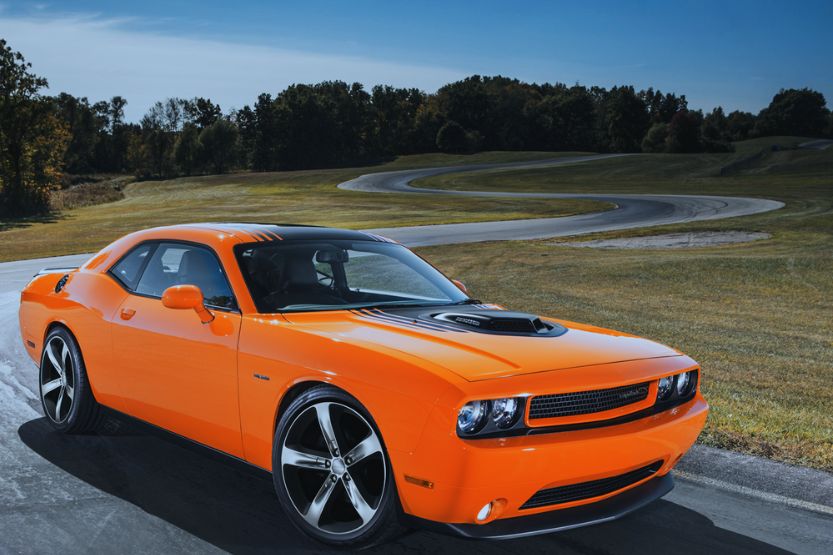When it comes to the world of automobiles, enthusiasts are often on a quest for deeper meaning behind the various acronyms, badges, and nomenclatures that adorn their favorite vehicles. One such badge that has sparked curiosity among many is the “R/T” designation found on numerous Dodge performance vehicles. Have you ever found yourself pondering, what exactly does R/T stand for on a Dodge? Is it merely a badge of honor, representing speed and power, or is it something more profound? Let’s dive into this exciting topic and unravel the enigma surrounding Dodge R/T.
The acronym “R/T” predominantly stands for “Road/Track.” This designation heralds a lineage rooted in performance, a philosophy that promises exhilarating driving experiences, whether you’re cruising on the highway or taking sharp turns on a winding racetrack. But it’s not simply a label; it represents an entire ethos at Dodge, encapsulating their commitment to automotive excellence. The significance of this term goes beyond the mere physical aspects of the vehicles—it embodies a spirited approach to engineering.
Dodge has long been synonymous with power and performance, dating back to the early 20th century. However, the R/T badge gained prominence in the late 1960s and early 1970s when Dodge introduced a series of high-performance models aimed at the muscle car market. This era defined a generation of automotive enthusiasts who craved not just speed but an identity tied to power, aggression, and American ingenuity. The R/T-equipped models during this time were, in essence, a testament to the engineering prowess and boldness that characterized Dodge.
You might be asking yourself, “So, what kind of features does the R/T designation bring to the table?” Well, it’s quite a tease! The answer lies in an array of enhancements that distinguish R/T models from their standard counterparts. Typically, R/T vehicles boast a more powerful engine, refined suspension systems, and a host of performance-oriented features designed to elevate your driving experience. Think of larger brake systems, sportier suspension setups, and aggressive tuning—all designed to enhance handling, responsiveness, and outright speed.
One cannot discuss R/T without mentioning the iconic Dodge Charger and Challenger. These models stand tall in the pantheon of American muscle. They are unrepentantly bold with their muscular exteriors, and the R/T variations of these cars signify a level of raw power that often leaves admirers and competitors alike in awe. With powerful HEMI engines that emit a soulful roar, the R/T versions of these vehicles seem to beckon the road, inviting drivers to unleash their inner speed demon.
However, with great power comes great responsibility—or in this case, great challenges. The true question persists: is it justifiable for everyday drivers to indulge in these potent machines? While R/T represents the exhilaration of performance, it also broadens the conversation about the balance between power and practicality. For some, owning an R/T is about embracing a lifestyle fueled by speed and excitement. For others, it poses a dilemma—can you really harness the strength of an R/T model on daily commutes? Or is it a vehicle best reserved for weekend warriors and track enthusiasts?
The idea of embracing an R/T in your daily life presents a set of puzzles worth contemplating. For instance, can the spirited acceleration and thrilling handling become a double-edged sword in the hands of an everyday commuter? In city traffic, such robust performance may seem excessive, perhaps even inviting temptation to push the limits—a slippery slope for those unaccustomed to the exhilaration of such automotive power.
Moreover, fuel economy stands as a persistent concern. The glorious rumble of a HEMI engine may enchant many, but the implications for your wallet are essential to consider. R/T models, while undoubtedly exhilarating, often come with thirstier fuel consumption compared to their less potent counterparts. Thus, potential buyers grapple with the age-old question: is the thrill of the ride worth the cost? This contemplation not only showcases the seductive allure of R/T but also underlines the practical realities that modern car buyers must face.
Let’s not forget the cultural significance of the R/T brand. It has transcended mere automotive jargon to become a social badge—a mark of pride among car enthusiasts. Engaging in conversations around R/T within the automotive community can often reveal a shared passion for speed and performance, but it can also lead to light-hearted debates about which R/T model reigns supreme. Is it the Charger or the Challenger? This friendly rivalry encapsulates the spirit of competition that makes car culture thrilling and vibrant.
In conclusion, the R/T moniker on Dodge vehicles symbolizes much more than just a mere classification. It represents a rich history steeped in performance context, a playful exploration of power versus practicality, and a communal bonding point among car enthusiasts. It’s an invitation to consider—and perhaps even challenge—your own perceptions of driving, identity, and the relationship we share with our vehicles. Whether you view it as a badge to sport with pride or a mere label on a car, the essence of R/T lies in the passion it evokes, the journeys it facilitates, and the laughter and camaraderie it fosters among those who dare to embrace the thrill of the road. So, what does R/T stand for on a Dodge? Perhaps it stands for your next great adventure.
